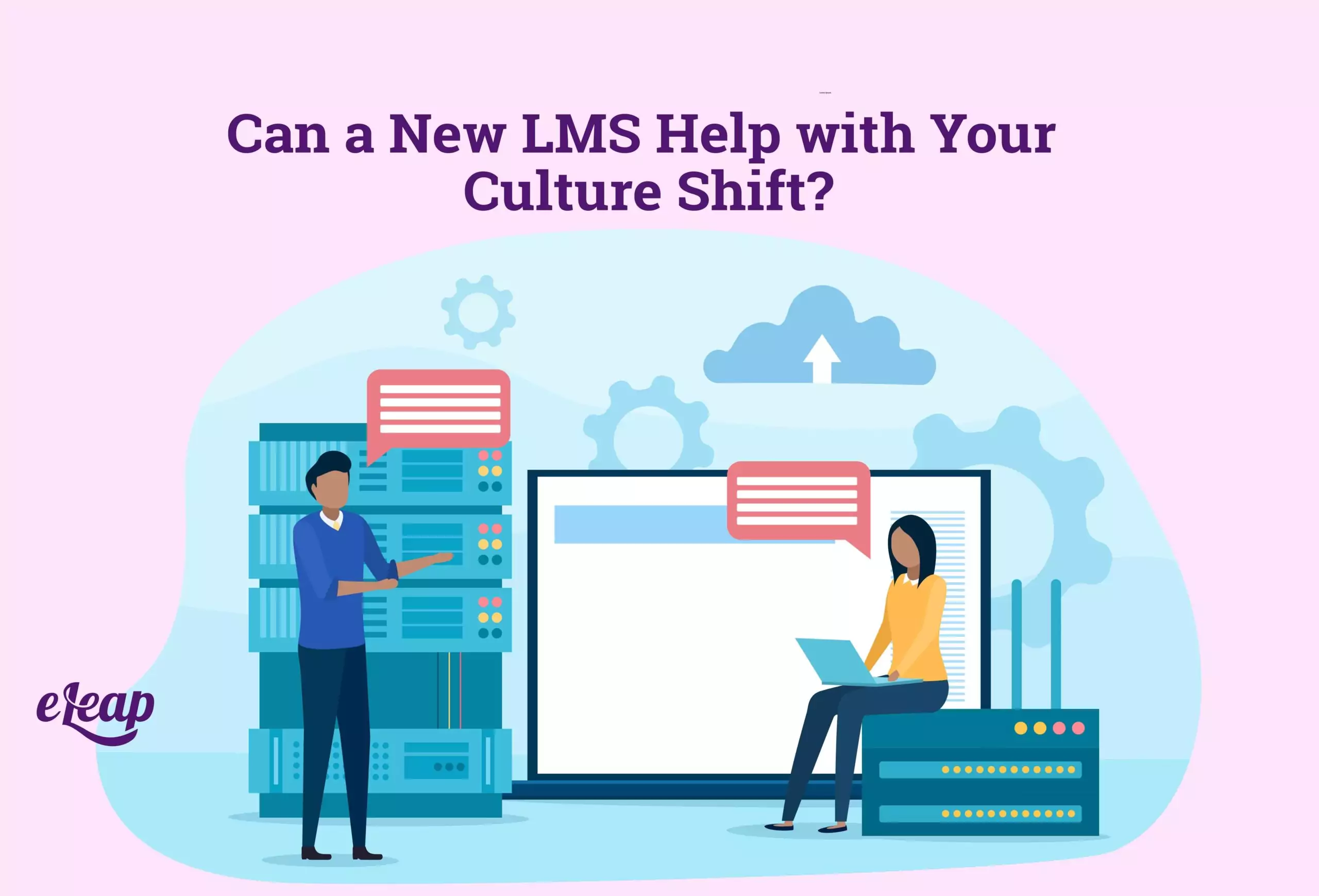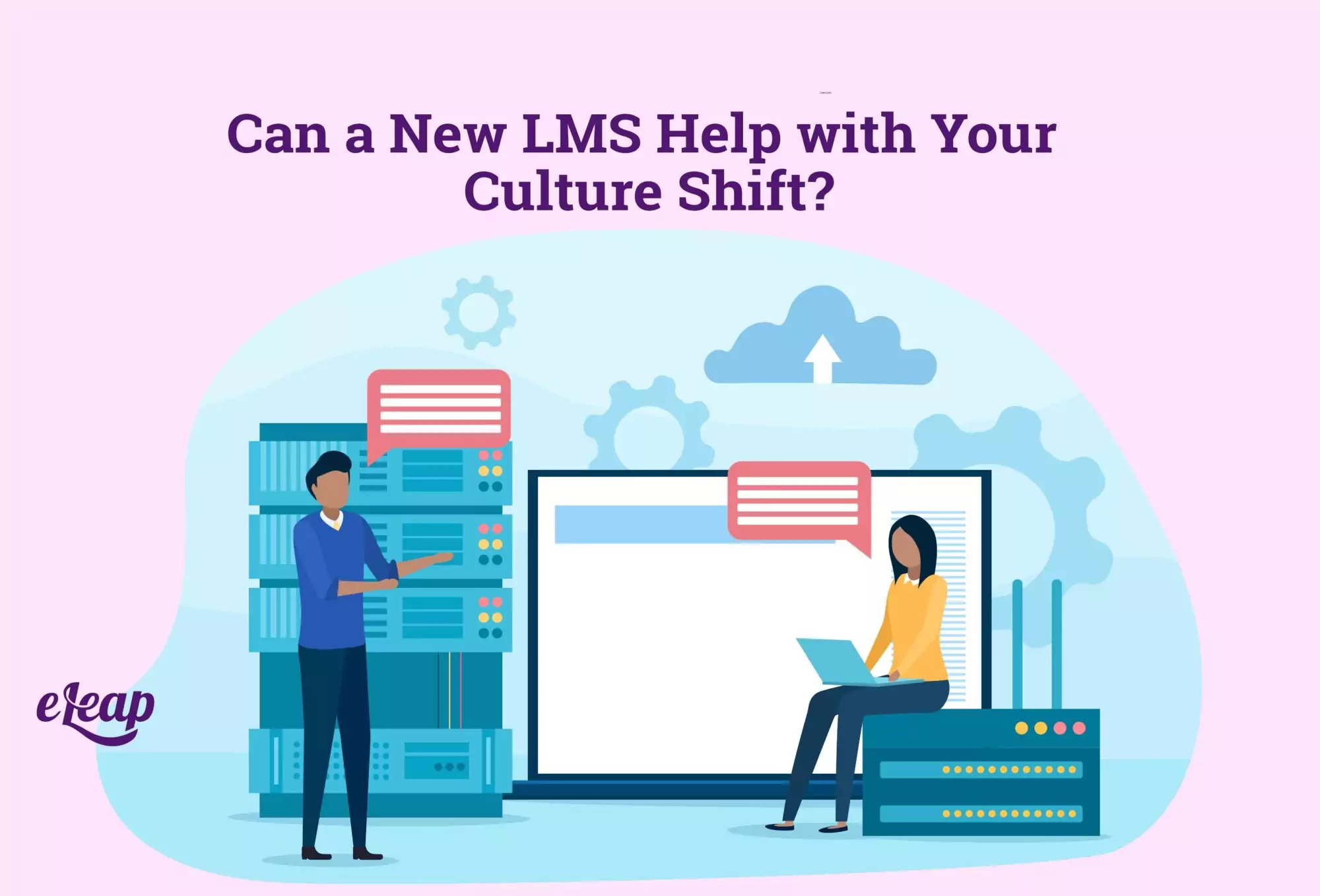Can a New LMS Help with Your Culture Shift?

Sometimes, it takes a culture shift for companies to adopt new technologies. In other cases, it’s the new technology that helps shape the culture shift. The adoption of a learning management system could be a result of the change in your organization’s culture, but in many cases, people come to the LMS before they figure out how to shift their culture entirely.
After all, right now is an important time in the employee/employer relationship and the hiring process for every organization. The Great Resignation gave employees the power to say that they’re better than low-paying jobs and poor working conditions. Companies that want to attract and retain top talent need to make sure they’ve got the best offerings on the table. Part of that comes in having a customized learning platform that covers everything from onboarding to continuing education over the course of each employee’s career.
Investing in an LMS is critical for all organizations today. It’s a more relatable, customizable way to deliver training and education to people in a way that meets their needs. It also helps you deliver a better learning experience by taking advantage of technologies like AI, augmented and virtual reality, and curated content. The benefits of the LMS are plentiful, including that it might be just what the organization needs to start that culture shift.

What is a Culture Shift?
For those who aren’t familiar, a culture shift is when an organization’s company culture, or values, ideals, and day-to-day operations, change to reflect their new views or ideals. For example, a company that didn’t used to have a lot of incentives for employees could experience a culture shift to a flexible work model where there’s also flexible PTO, unlimited vacation time, and other perks that reward them for being a valued member of the team.
There are several ways a culture shift could go, but if you’re looking to go in the right direction, you’ll want to focus on creating a learning-based culture that’s open, welcoming, and treats people like people, not production tools.
How Can Organizations Tell When a Culture Shift is Necessary?
Generally speaking, companies usually feel the growing pains that come with a culture shift before they’re a huge issue. You might feel like the winds of change are on the horizon, and you’re probably right. There’s no single indicator that it’s time for a shift, but if you’ve got dissatisfied employees, high turnover, or a problem keeping employees engaged in their positions and their professional development, it might be time for a change.
If profits are down, turnover is up, or other turmoil exists in the organization, it is usually a sign that something needs to change. Today, it’s becoming more apparent that culture has a lot more to do with failing organizations and hard times for a business than anything else. People have higher demands. They expect more from their employers. And thanks to the pandemic, they’ve been taught that they can probably get it.
What Can the LMS Do to Spur the Change?
There is a lot that goes into getting everyone on board with the culture shift that the organization needs. Fortunately, introducing a new way of learning and engaging will help people feel like they’re a valued part of the organization, which primes them for the shift. As they get more engaged and involved, the LMS is used to deliver training and give them a space to share their own content, collaborate, and more. This gives people back a sense of power and a feeling that they’re valued. It allows them to learn important things in a format that works for them, and it helps you identify weak spots or people who may need a little more assistance.
The LMS can even be used to educate your employees on the culture shift that you’re attempting to enact or that will be coming down the line. You can share information about company cultures and how they can help employee performance and even ask people for feedback if they have ideas about content for the LMS or what kind of resources they could benefit from. User-generated content is becoming a big part of the modern LMS, so get your users involved and let them lead the revolution.
How to Encourage Acceptance of Change
Naturally, your employees are going to balk at change, at first, even if it seems like it’s good. That’s just human nature. It’s going to be your job to get them on board with the culture shift and the new LMS, no matter which order you introduce them in. Many organizations that succeed with culture changes often prime employees from the beginning and teach a culture of change and change management.
The future of business is flexible and adaptable—just like the modern LMS. And it’s that LMS that can help you educate employees on the reasons behind the culture shift. This tool can deliver expert insights, help employees connect, and create a team that’s focused on changing for the good of the organization by embracing the modern LMS and more. People are naturally disinclined to change, but technology is making that more and more difficult—instead of teaching people to fear it, teach them how to embrace it.
Put the LMS to Work
Organizations can utilize their LMS to teach employees everything that they want them to know about the new culture shift and the way the business will work in the future. This can give them the tools to communicate and collaborate with their peers and feel more like a valued member of the team than ever before. And it can be done with a platform that can be customized and branded to the organization so that it fits with all the rest of the onboarding tools and materials.
Even the idea of embracing a digital LMS platform might be a culture shift for some organizations. Whatever it is, just make sure that you utilize your resources to make it a good shift for everyone involved.
Take advantage of online learning and the right LMS platform to start having greater production and an overall increase in the quality of your organization.